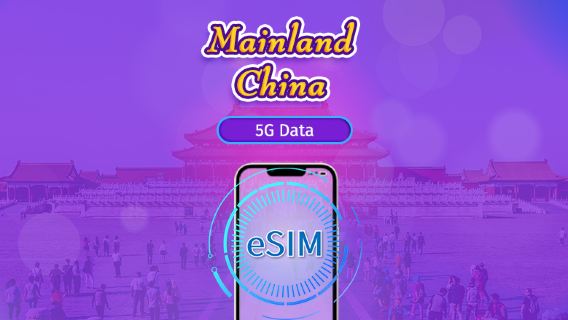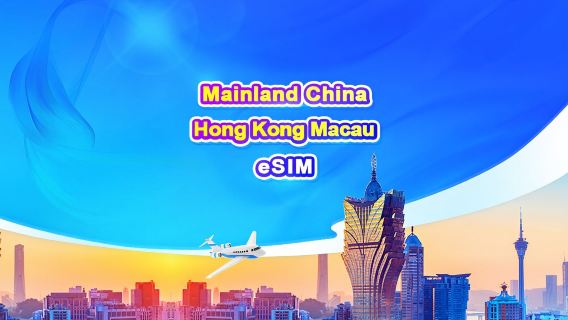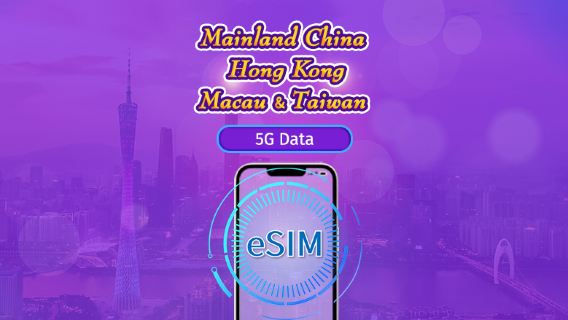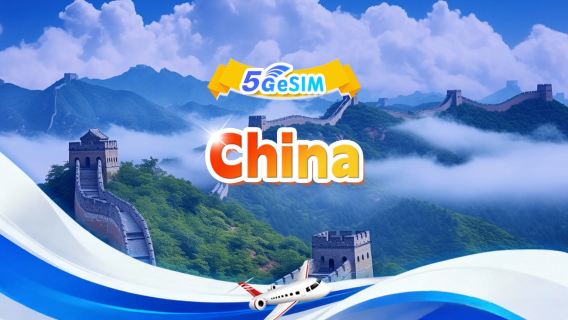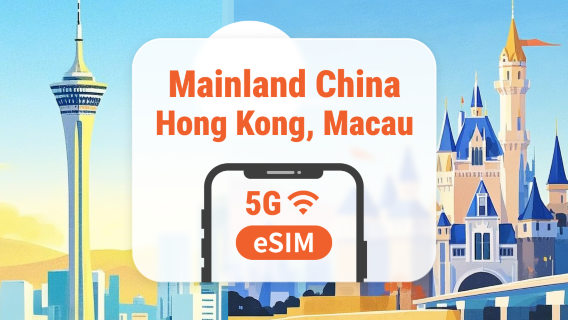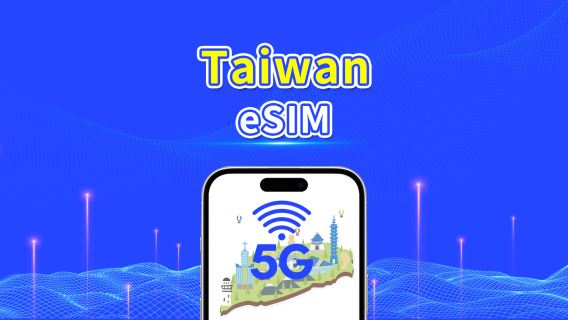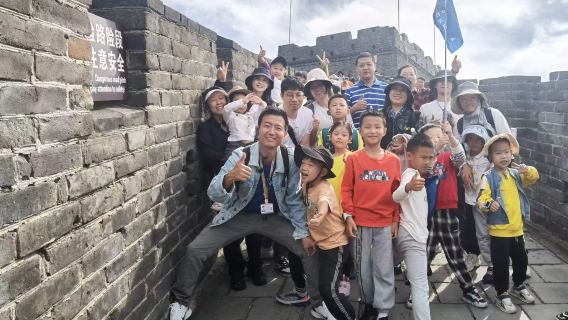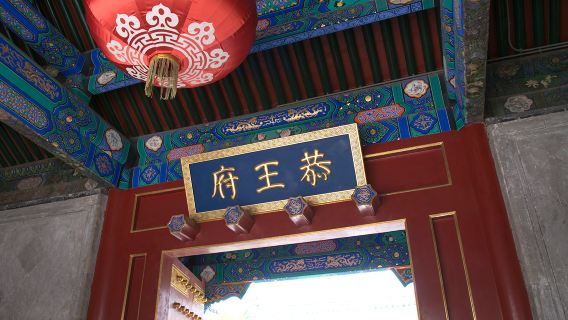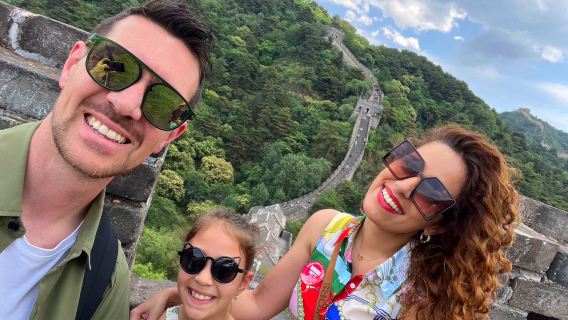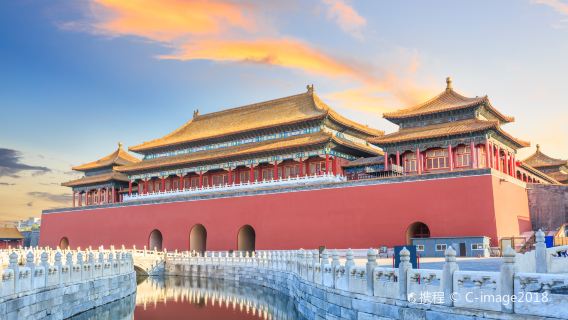
Photo via Beijing Daily App
Beijing subway is the most convenient way to travel around this ancient capital. Our guide shows you how the metro works, including lines, operating hours, ticket prices, riding tips and different payment options. You'll also find good hotel choices near important stations. Get ready to explore Beijing by subway!
Beijing Subway Overview
The Beijing Subway is one of the world's largest metro systems. It has 29 lines (including 2 tram lines) covering 879 km (≈ 546.19mi) with 523 stations. There are also 99 transfer stations connecting different lines. Currently, eight new lines are under construction to further expand the metro network.
In 2024, about 3.6 billion passengers used the subway - nearly 1 million people every day. As of April 2025, the Beijing Subway's highest daily passenger volume is 13.7538 million (July 12, 2019). The subway is the easiest way to visit top attractions in Beijing.
Beijing Metro Map

Beijing Metro Operating Hours & Major Spots
Beijing subway operating hours vary by line, with first trains generally running between 4:50 AM and 6:00 AM, and last trains departing between 10:30 PM and 11:30 PM. Exact schedules depend on the line and direction – check official sources for details.
| Line | First Train | Last Train | Major Stops | Notes |
Line 1 Batong Line | 4:57 | 23:33 | Connects to Line 2/4; city centre | |
Line 2 | 5:03 | 23:41 | Gulou, Qianmen | Circular line; transfer to Line 13 |
Line 3 | 5:05 | 23:25 | Worker’s Stadium, Chaoyang Park | Connects to Line 10/14; serves eastern CBD areas |
Line 4 | 4:58 | 22:48 | Beijing South Station, Xidan | Links to high-speed rail |
Line 5 | 4:59 | 23:10 | Yonghegong, Temple of Heaven East Gate | North-south artery |
Line 6 | 4:51 | 23:35 | Nanluoguxiang, Chaoyangmen | Hutongs & shopping |
Line 7 | 5:09 | 23:14 | Universal Resort, Beijing West Station | To theme park & transport hub |
Line 8 | 5:06 | 23:01 | Near Bird’s Nest | |
Line 9 | 4:59 | 23:18 | National Library, Military Museum | Westside transfers |
Line 10 | 4:35 | 00:22 | Sanlitun (Tuanjiehu), Panjia Yuan | Loop line; connects to 20+ transfer stations |
Line 11 | 5:28 | 22:28 | Xinshougang, Moshikou | Beijing Metro Winter Olympics Branch Line |
Line 12 | 5:00 | 00:14 | Renmin Univ., Suzhou Qiao | Connects to Lines 4/10; serves the northern region |
Line 13 | 5:34 | 23:54 | Wudaokou, Dongzhimen | Key for universities |
Line 14 | 4:55 | 22:42 | Dawanglu, Wangjing | To CBD & parks |
Line 15 | 5:12 | 23:17 | Olympic Park, Wangjing | Art districts |
Line 16 | 5:00 | 22:39 | Lize Shangwuqu, Suzhou Jie | North-south line; serves Fengtai business district |
Line 17 | 5:20 | 22:30 | Future Science City, Workers’ Stadium | New tech areas |
Line 19 | 5:30 | 23:30 | Mudanyuan, Caoqiao | Links to Line 2/10/Daxing Airport Express |
Capital Airport Express | 5:56 | 22:26 | Terminal 2/3, Dongzhimen | 25-min to city (¥25) |
Daxing Airport Express | 5:41 | 23:00 | Caoqiao, Daxing Airport | 22-min express (¥35) |
Fangshan Line | 5:03 | 23:14 | Guogongzhuang, Liangxiang Univ. Town | Connects to Line 9/10/Yanfang Line; serves southwest suburbs |
Changping Line | 5:00 | 23:36 | Shahe Univ. Park, Ming Tombs | North suburbs; serves university town and Ming Tombs area |
Yizhuang Line | 5:19 | 23:19 | Yizhuang Railway Station, Songjiazhuang | Connects to Line 5/10; serves Beijing Economic-Technological Development Area |
Yanfang Line | 5:05 | 22:55 | Yancun East, Yanhua | Connects to Fangshan Line; serves southwestern industrial and residential areas |
Xijiao Line | 5:56 | 23:37 | Fragrant Hills, China National Botanical Garden | Scenic tram to parks |
Yizhuang T1 Line | 6:00 | 22:00 | Rongchang Dongjie | Tram, with 14 ground stations |
Line S1 | 5:24 | 23:32 | Shichang, Pingguoyuan | Maglev; western suburbs |
*Operating times are based on 2025 Beijing Subway App data and may vary by line/direction. Please check the official app or live broadcast announcements for actual schedules.
Beijing Metro Ticket Fares
Beijing subway fares use a distance-based pricing system, with standard journeys calculated in increasing mileage. Two airport express lines (Capital and Daxing) charge flat rates instead of distance pricing. Regular commuters benefit from automatic monthly discounts that increase with usage, while all passengers should note overtime fees apply for stays exceeding 4 hours in the system. The specific rules are as follows:
Standard Fare Structure (Distance-based)
Distance | Fare |
First 6km (included) | ¥3 |
6km - 12km (included) | ¥4 |
12km - 22km (included) | ¥5 |
22km - 32km (included) | ¥6 |
Every additional 20km | +¥1 |
(No price cap) |
Special Line Fares (Airport Express)
- Capital Airport Express: ¥25 (flat fare)
- Daxing Airport Express:
∙ To Daxing Airport: ¥35 (from Caoqiao) or ¥25 (from Daxing Xincheng)
∙ Between Caoqiao and Daxing Xincheng: ¥10
∙ Business class: ¥50
Beijing Metro Day Pass Price
Beijing Rail Transit Pass is an electronic ticket, which can be used by one person for unlimited times within the validity period, and there is no limit on overtime or over-distance. The specific fares are as follows:
- 1-day pass: ¥20
- 2-day pass: ¥30
- 3-day pass: ¥40
- 5-day pass: ¥70
- 7-day pass: ¥90
Discount Policy (Monthly Accumulation)
- ¥100-149 spent: 20% off subsequent rides
- ¥150-399 spent: 50% off subsequent rides
- Over ¥400: No further discounts
Overtime Charges
- Standard lines (excluding Capital Airport Express): ¥3 fee if staying over 4 hours
- Daxing Airport Line: ¥10 fee if staying over 4 hours
How to Buy and Pay for Beijing Subway?
Beijing Subway provides passengers with a variety of payment methods. You can purchase a single journey ticket at the station ticket vending machines or ticket counters using cash, mobile QR codes (Alipay/WeChat Pay), or contactless payment with foreign credit cards (UnionPay, Visa, Mastercard, JCB, or American Express).
For frequent rides, the Yikatong card (physical card or mobile NFC version) is most convenient - available at stations and rechargeable via app or kiosks. Many tourists prefer using mobile payment apps like Alipay or Yitongxing, which let you scan QR codes at gates without buying physical tickets.
International visitors can also directly tap their foreign-issued Visa, Mastercard, JCB, American Express cards or UnionPay (China) at the gate for contactless payment - no ticket purchase needed. All these methods connect you to Beijing's extensive subway network that serves major attractions across the city.
How to Buy Beijing Subway Tickets at Station Ticket Machines/Counters?
Step 1: Find a Ticket Machine or Counter
- Look for TVM (Ticket Vending Machine) or ITVM (Internet Ticket Vending Machine)
- Beijing metro stations also have Tickets/Information counters to assist you

Beijing Subway TVM & ITVM
Step 2: Select Your Destination Station
- On the touchscreen, choose "Single Journey Ticket"
- Pick your destination station from the metro map

Image source: beijing.gov.cn
Step 3: Choose the Number of Tickets
- Use the +/- buttons to select how many tickets you need
- Confirm your selection
Step 4: Choose Payment Method
- Option 1: Mobile Payment (Recommended)
Select "QR Code Payment"
Open Alipay / WeChat Pay / e-CNY / UnionPay QuickPass
Scan your phone’s payment code at the machine - Option 2: Cash Payment
Insert ¥5, ¥10 banknotes or ¥1 coin
Machines give change if needed - Option 3: International Credit Card (Limited Stations)
Some stations accept Visa/Mastercard
Alternatively, buy a Beijing Pass transport card
Step 5: Collect Your Ticket & Enter the Subway
- Take your single journey ticket from the slot
- Keep it until exit! (You’ll need it to pass through gates)


Beijing Subway Single Journey Paper Ticket
Can I Use Foreign Credit Cards on Beijing Subway?

Image source: Beijing Daily
Yes, Beijing Subway accepts foreign credit cards for contactless payments. Since June 15, 2025, it supports JCB and American Express cards, along with existing UnionPay, Mastercard, and Visa. This makes it the world's first subway system to fully integrate all five major card networks. The service covers all 29 lines, 523 stations (including Airport Express and S2 suburban railway line), and operates 24/7 at every gate.
To use a foreign card, simply tap it on the contactless reader at the turnstile when entering and exiting. No registration or mobile app is needed—just hold your card briefly until the gate opens. The system automatically calculates fares based on your travel distance. Ensure your card has a contactless symbol and sufficient funds before use.

Image source: Beijing Daily
If your card doesn't work, station staff can assist with troubleshooting. Please note that the system only accepts internationally-issued cards from Mastercard, Visa, JCB and American Express - cards of these brands issued within China are not supported. Some foreign cards may require enabling international transactions beforehand. With this system, tourists can easily travel on the Beijing subway using their daily credit cards, making travel more convenient than ever.
How to use Alipay to pay for Beijing subway?
Open Alipay App → 1️⃣ Click "Transport"→ 2️⃣ Select "Beijing Metro" → 3️⃣ Activate "Beijing Metro QR Code" → Click "Agree and obtain card" → 4️⃣ Enter payment password → 5️⃣ Scan at the Gate

Image source: beijing.gov.cn
How to use mobile app to pay on Beijing subway?

1. Download the App
- Beijing Subway 北京地铁 or Yitongxing 亿通行(Beijing Metro official)
- MetroMan (third-party option)
2. Register & Log In
- Chinese phone number or Foreign number/email (check app compatibility)
- Log in with your Alipay account or Apple ID (check app compatibility)
3. Set Up Payment
- Alipay/WeChat Pay (recommended)
- International cards (may require extra steps)
4. Generate QR Code
- Open app → Select "Ride Code" 乘车
- Ensure QR code screen is active
5. Scan at Gates
- At entrance: Scan QR Code
- At exit: Rescan to deduct correct fare
How to buy and use the Beijing Yikatong Card?

Step 1: Get a Yikatong Card
- Physical Card: Purchase at subway stations, convenience stores, or Yikatong service centers (cost: ¥20 deposit +top-up amount)
- Mobile NFC Card: Add to iPhone/Android via Wallet app (search "Beijing Municipal Administration & Communication Card")
Step 2: Top Up Your Card
Online: Use the Beijing Yikatong App (supports foreign cards)
Self-Service:
- Subway station kiosks (look for "IC Card Recharge")
- Bus terminal recharge points
Staff Assistance:
- Visit Yikatong service centers or subway ticket counters (bring passport for verification)
Step 3: Use Your Card
- Physical Card: Tap on subway/bus card readers (green sensors)
- Mobile NFC: Hold phone near reader (no unlock needed)
How to Take the Beijing Subway as a Foreigner?
Step 1: Buy a Ticket
- Use self-service machines (cash/WeChat/Alipay), ticket counters or Ride QR code
- Options: Single-journey paper ticket, QR code e-ticket (¥3-¥7) or rechargeable Yikatong card (¥20 deposit)
Step 2: Security Check
- All bags go through X-ray scanners
Step 3: Enter the Station
- Card users: Tap physical card on reader (look for "Please Tap Your Card"/"请刷卡").
- Mobile pay: Scan QR code (WeChat/Alipay/Yitongxing app) at designated area.
- NFC phones: Tap the back of your phone (near the camera) to the card reader.
Step 4: Board the Train

Please check the train's direction (To [terminal station]) before boarding
- Check direction signs (usually bilingual) before platform
- Check the LED Strip Map above doors - Shows next station and transfer info. Green flashing lights indicate approaching stop.
- Monitor the Next Station Display by doors - Provides upcoming stop information.
- Listen for station announcements - Broadcasts will alert you when arriving.
- Beijing Subway provides bilingual service - All announcements and displays are in Chinese and English.

Step 5: Transfers (if needed)
- Follow colour-coded signs with line numbers
- Transfer walks can take 2-10 minutes

Step 6: Exit & Payment
- Tap card/NFC again to deduct fare
- Scan QR code again to deduct fare
- Paper tickets: Insert into slot marked "Insert Ticket" or "投票口" (do not keep)
Best Hotels in Beijing
The bustling Wangfujing Pedestrian Street is just steps away from the Forbidden City and has convenient subway links to major attractions via Line 1/Batong Line and Line 8. Shopping streets and local restaurants are within easy reach, and staying at hotels near Wangfujing, such as Atour Hotel of Beijing Tiananmen Wangfujing Pedestrian Street or Grand Hyatt Beijing, ensures a balance of convenience and luxury. These hotels are about a 10-minute walk from Wangfujing subway station, making it easy to return after sightseeing.
Qianmen Street attracts tourists with authentic Beijing snacks and more budget-friendly stays. Well-connected via Lines 2/7/8 (Qianmen/Zhushikou stations), hotels near Qianmen Street such as Beijing Qianmen Courtyard Manxin Mansion or Beijing Tiananmen Qianmen Street Manxin Hotel, and it takes only 30 minutes by subway to reach the Forbidden City and the Temple of Heaven. The area’s traditional hutongs (alleys) and night markets reward those who choose this historic location.
Beijing Hotel Recommendations
5 star
Business travel
Family friendly
Breakfast
Gym
Beijing Metro FAQs
Q: Is the Beijing subway good?
A: Yes, Beijing's subway is modern, efficient, with 29 lines covering most tourist attractions.
Q: How do you pay for the subway in Beijing?
A: Use mobile apps (Alipay/Yitongxing), single-ride tickets, or a Yikatong transit card.
Q: How to use Beijing Metro as a foreigner?
A: Download a metro app with English support, follow station signs in English, and avoid rush hours.
Q: How to get around Beijing as a tourist?
A: The subway is the easiest option, but for areas not covered, taxis and buses are also available.
Q: What is the best metro app for Beijing?
A: "Beijing Subway" (北京地铁), "Yitongxing" (亿通行), "Beijing Yikatong" (北京一卡通) is the official app. Many foreigners find Alipay the easiest option - just activate the metro QR code in Alipay's "Transport" section. Third-party apps like MetroMan also work well with English interfaces.
Q: Where can I buy a Beijing subway card?
A: Purchase Yikatong cards at any subway station or use mobile NFC version in your phone's wallet.

 409169 booked
409169 booked